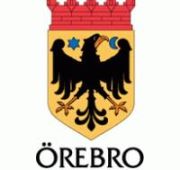
In Örebro we are committed to reducing our carbon footprint. The city has greatly increased its energy efficiency by developing and integrating innovative digital technologies over the past decade. In the coming years, our work on energy districts will only intensify due to increased electrification. In this transition, Örebro is committed to not losing sight of social sustainability, and proactively working with citizens, academia, businesses and NGOs to create a just transition.
- Urban | Local and regional | Energy | Climate and environment | Sustainable | Social inclusion and Equality | Research and Innovation
- Code: 09TK241310
- Jacques Delors building, JDE 61
Practical information
- When
-
Wed 09/10/2024, 11:30 - 11:45 CET
- Where
- Jacques Delors building, JDE 61
- Type of partnership
- Partnership
- Format
- EURegionsTalks / Living Library/Pecha Kucha
- Theme
-
Smart and sustainable growth for regions
- Language
- English

Partner

Reporting
Session summary
During our session, we discussed a new neighborhood we've planned and are currently building: Tamarinden. We've used this project to push boundaries in smart city technology, especially in energy innovation (creating an energy district). Simultaneously, ensuring social sustainability was crucial. This was achieved by focusing on human integrity alongside smart technologies. Additionally, we focused on traditional urban design elements that set the foundation for vibrant urban life. This aspect is captured in the concept of "life between buildings," emphasizing reduced car presence and creating more space for pedestrians, cyclists, and recreational areas.
Beyond the Tamarinden project, we also looked to future developments. Rather than expanding the city outward, we’re prioritizing the existing urban landscape by identifying underutilized spaces that offer potential for densification. One such example discussed was Aspholmen—a neighborhood with a mix of commercial and light industrial spaces. Focusing on areas like these has several advantages: it preserves agricultural land and green space, and allows for the creation of exciting new mixes of functions and architectural styles. However, these projects also pose challenges, such as fragmented land ownership, requiring coordination with multiple stakeholders.
Finding innovative ways to redevelop existing spaces is essential. Sustainability cannot be achieved by only creating new, eco-friendly areas; we must also work with the existing cityscape. For instance, how do we transform areas like Aspholmen into positive energy districts? That is our next step—a step toward creating a truly sustainable city that supports both social and environmental goals.
Quotes
-
Sustainability cannot be achieved by only creating new, eco-friendly areas; we must also work with the existing cityscape.



